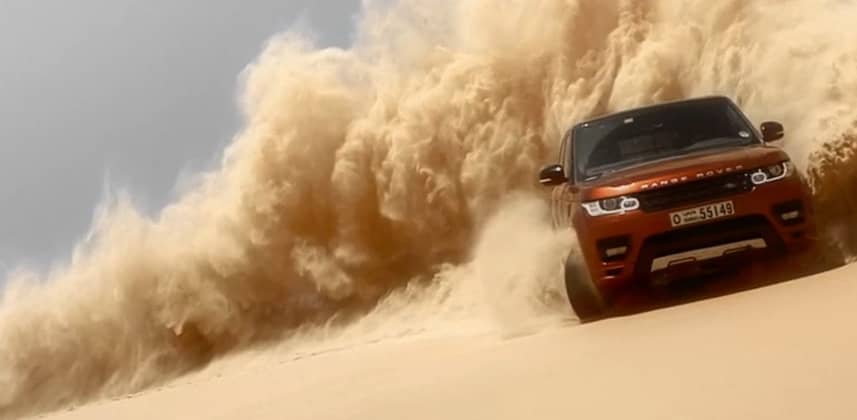| Series |
|---|
Colorist Look Inspiration – Car Commercials
Car commercials are amazingly good fun but also a great challenge to a colorist.
Metallic cars burn out easily but the commercials also need to be bright and punchy so how do you make it work?
I’ve put together a few tips and rules I follow when grading cars.
The car is always the star. The people that may be in the commercial need to look good but no grades or look should come at the cost of making the car look bad.
Car companies are very very particular about the color of the car. Get some reference images of what the car SHOULD look like.
Even if the scene is sunny or snowy the car must be with in a very tight tolerance of this reference image.
If you don’t follow this you will get your grade rejected as they have spent months debating over the color of the car they are launching and want it to look that way!
Make sure you remember the rules of your country.
For example it seems silly but sometimes a car commercial can be rejected if the windows are too dark or tinted due to that level of tinting being illegal in your area.
It’s not strictly our responsibility to know this but by asking your clients it can save them a ton of heartache and issues down the road, it’s also great for showing you know a lot about grading cars.
Techniques
Masking…Masking….MASKING!
Car commercials are pretty much always hand rotoscoped by a colorist. Super accurate tight masks are a must when working on a car.
Unfortunately there isn’t many shortcuts. Tracking the car works well but you will be using lots of keyframes and custom shapes to get your car to where you want it.
The last range rover commercial I graded the final car shot had 42 nodes!
Common areas to look out for are :
Headlights
Front Grill
Badge
Wheels
Any Chrome Elements
Windows
Flared or Contoured body work (to make the cars smooth lines show nicely)
Sharpening
I use a lot of sharpening when working on cars.
Normally the front of the car, badge and wheels are first on my hit list but have a look at the image and use your instinct to find the nicest looking features of the car and run with those.
Leading The Eye
My number one trick for making the car pop out is to key the road.
The road can always be made darker and a lot of the time add a complimentary color into it.
For example adding blue in the midtowns and dropping the gamma into a keyed road can make a huge difference to making the car pop out.
I also love using sky gradients to give a subtle push to looking at the bottom of the frame.
Highlight Control
Keep a very very careful eye on your highlights when grading cars. There is so much curved surface area you can get a huge amount of light hitting the top of the car and on the bonnet.
Blown highlights are unacceptable and you have to keep an eye on these. I find the highlight control in Resolve is very useful to roll of highlights that are a little hot.
Remember you can combine this control with a luma key to get a very very refined control for your highlights.
Controlling The Color Palette
Depending on the color of your car you may need to keep a tight eye on the rest of your image.
As the car is always the star we want to keep it at least 10 to 20 percent more vibrant or separated from the background.
I try to make sure that I control things like the green of the grass, or the levels of the sky and road. You may notice you either never see another car in a car commercial or they are all very old and grey coloured. This helps keep our car the star!
Its tough to get good car footage that I can share with you guys so I promise I’ll upload a practical video insight as soon as I can on this!
Lets take a look at some great examples of well executed car commercials!
Range Rover: Empty Quarter
Range Rover: Empty Quarter from Big Buoy on Vimeo.
Jaguar ‘The Art Of Villainy’
Jaguar ‘The Art Of Villainy’ from Mark Jenkinson on Vimeo.
Lexus NX
Be Inspired!
Before I start every car project I try and think of the main feeling I get from watching the raw ungraded edit. I then check out stills and videos and find grades that make me feel the same way.
I then use these as building blocks to come up with my grade.
I might like the contrast from one film, the texture and color temperature of the other and maybe the grain or sharpness from a third. I then use those as inspiration to build my look.
Grading is hardest when you don’t know where you want to take the image!!
– Dan


